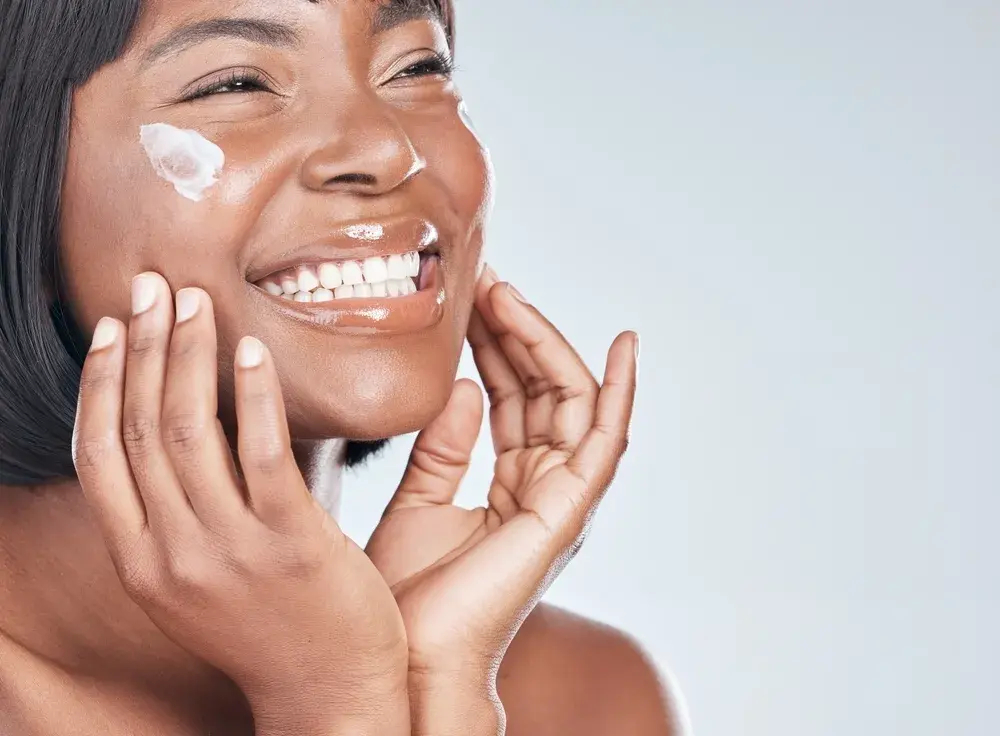What are Alpha Hydroxy Acids?
Alpha hydroxy acids (AHAs) are a group of acids naturally occurring in certain foods. They're commonly used in skincare products for their exfoliating properties.
Unlike physical exfoliants, like scrubs, AHAs are chemical exfoliants. They break down the bonds that hold dead skin together, revealing the newer, fresher skin underneath (hello, glow!).
AHAs are water-soluble, differentiating them from beta hydroxy acids, which dissolve in lipids (fats). This means AHAs primarily work on your skin's top layer to target concerns like wrinkles, discoloration and dryness. Some of the most popular types of AHAs include glycolic acid, lactic acid, citric acid and malic acid.
What are the uses of Alpha Hydroxy Acids?
So, what are alpha hydroxy acids used for? The short answer is exfoliation, which allows healthy skin to come to the surface. But this comes with a whole range of skin benefits. According to an article in the Jundishapur Journal of Natural Pharmaceutical Products, AHAs support skin moisture, reduce fine lines and wrinkles, support collagen synthesis and fade dark spots.
Let's look at how some common AHAs work and what they're used for.
Glycolic Acid
One of the two most common AHAs in cosmetic products, glycolic acid is arguably the most powerful. It has the smallest molecule size of any AHA, so it can penetrate deeper into the skin for faster, more noticeable results. In addition to getting rid of dead skin, glycolic acid helps smooth wrinkles, minimize post-acne marks and repair visible signs of sun damage. Another cool use of glycolic acid? It's a humectant, which means it attracts water to help keep skin hydrated.
Lactic Acid
Lactic acid, the other most common AHA found in skincare, is a gentler exfoliating option that's great for beginners. Its molecules are slightly larger than glycolic acid's, so it takes longer for them to work their way into the skin (hence its gentleness). Like glycolic acid, lactic acid assists with skin surface turnover and improves your skin's natural moisture factor. While it isn't as effective on wrinkles or deeper lines, lactic acid can help soften fine lines and enhance skin texture.
Citric Acid
Citric acid is typically used to adjust skincare formulas' pH so they're not too alkaline (which can irritate the skin). In higher concentrations, citric acid also works as an exfoliator to slough away dead skin, brighten skin and soften fine lines.
Malic Acid
Malic acid is primarily used to help control products' pH. Because of its larger molecule size, it's not effective enough as an exfoliator on its own. However, it can help preserve antioxidant activity, so it's a good supporting player.
Where do Alpha Hydroxy Acids come from?
Different AHAs come from different natural sources. Glycolic acid, for example, is derived from sugarcane. Lactic acid comes from sour milk or fermented vegetables. Citric acid is found in citrus fruits such as oranges, lemons and limes. Malic acid is derived from fruits like apples, cherries and apricots.
Chemists can also produce alpha hydroxy acids synthetically. For example, glycolic acid and lactic acid are made through chemical synthesis, while citric acid is produced by fermenting a type of mold.
How to incorporate Alpha Hydroxy Acids into your skincare routine
Ready to reap the benefits of skincare with alpha hydroxy acids? Consider this your AHA starter guide.
Start with a low concentration
As with any active skincare ingredient, start with a low concentration of AHAs and gradually increase strength as your skin adjusts. Here are some options to try:
Neutrogena® Stubborn Blackheads Daily Acne Facial Serum contains 5% glycolic acid, 2.5% mandelic acid (another AHA) and 0.5% salicylic acid to unclog pores and reduce the look of blackheads.
Neutrogena® Stubborn Texture™ Acne Cleanser for Textured Skin combines 2% glycolic acid with 1% salicylic acid to clear acne and smooth skin with visible results starting in just one week.
Use AHAs in the evening to help prevent sun sensitivity
Ingredients that exfoliate your skin's surface layer can cause increased sun sensitivity. So, use alpha hydroxy acid products at night when you're not out and about under the sun's ultraviolet rays.
Slather on sunscreen in the morning
For further sun protection, apply sunscreen 15 to 30 minutes before you head outside in the morning — rain or shine. Use a nickel-sized blob of sunscreen on your face and about an ounce (the amount that would fill a shot glass) to cover all exposed areas of skin on your body. Remember to reapply at least every two hours, too!
Follow up with soothing products
Follow with a moisturizer for your skin type immediately after using any AHAs to help hydrate and soothe your skin. Look for ingredients like ceramides, hyaluronic acid and glycerin.
From protecting the skin's dynamic barrier to boosting underlying cellular activity, as a brand, Neutrogena®® offers dermatologically and clinically tested solutions to deliver products that boost skin's vital functions from the inside out and the outside in. When your skin's vitals are at their best, your skin is full of life.





